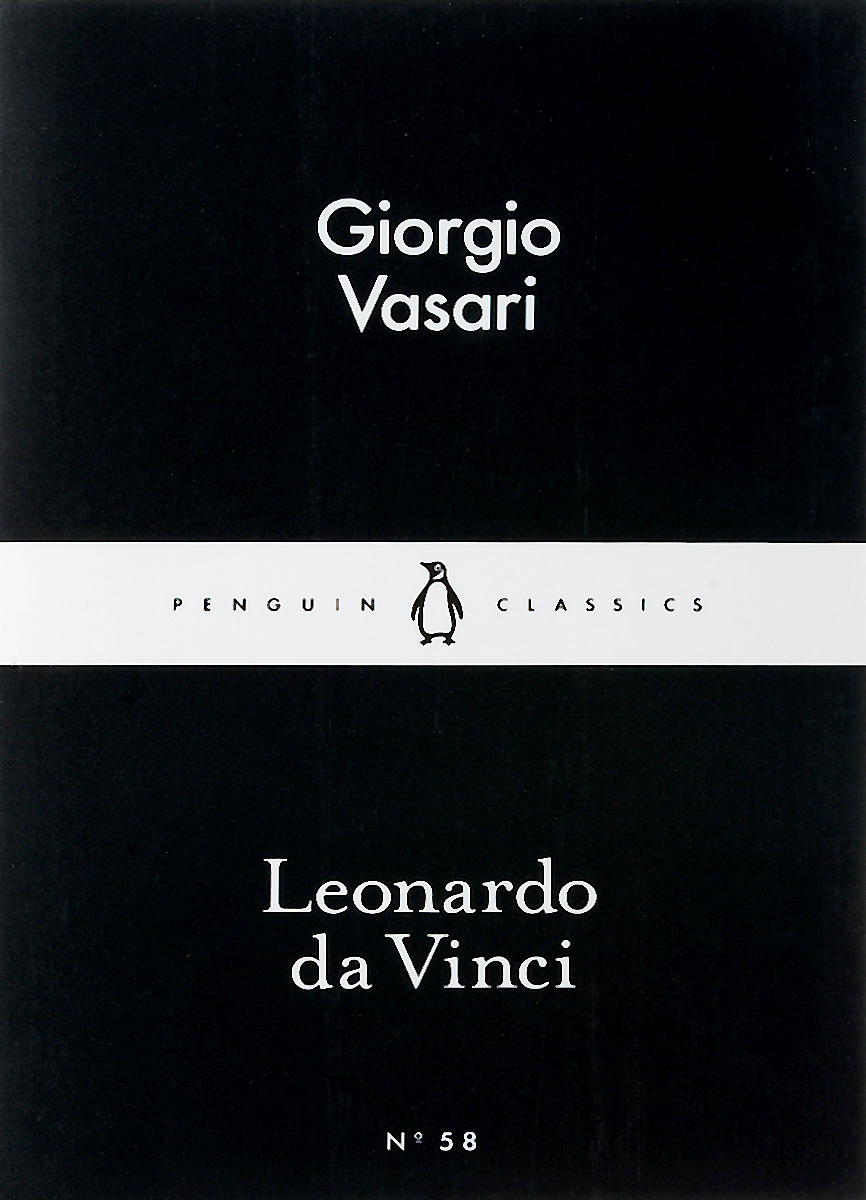Книга: Giorgio Vasari «Leonardo da Vinci»

|
Leonardo da Vinci
ISBN: 9780141397764 Купить за 105 руб на Озоне |
Другие книги автора:
| Книга | Описание | Год | Цена | Тип книги |
|---|---|---|---|---|
| Vite de più eccellenti pittori, scultori ed architetti. T. 4 | Примечание: Жизнеописания наиболее знаменитых живописцев, ваятелей и зодчих Полный вариант заголовка: «Vite… — Библиотечный фонд, электронная книга Подробнее... | электронная книга | ||
| Vite de più eccellenti pittori, scultori ed architetti. T. 6 | Примечание: Жизнеописания наиболее знаменитых живописцев, ваятелей и зодчих Полный вариант заголовка: «Vite… — Библиотечный фонд, электронная книга Подробнее... | электронная книга | ||
| Vite de più eccellenti pittori, scultori ed architetti. T. 2 | Примечание: Жизнеописания наиболее знаменитых живописцев, ваятелей и зодчих Полный вариант заголовка: «Vite… — Библиотечный фонд, электронная книга Подробнее... | электронная книга | ||
| Vite de più eccellenti pittori, scultori ed architetti. T. 3 | Примечание: Жизнеописания наиболее знаменитых живописцев, ваятелей и зодчих Полный вариант заголовка: «Vite… — Библиотечный фонд, электронная книга Подробнее... | электронная книга | ||
| Vite de più eccellenti pittori, scultori ed architetti. T. 1 | Примечание: Жизнеописания наиболее знаменитых живописцев, ваятелей и зодчих Полный вариант заголовка: «Vite… — Библиотечный фонд, электронная книга Подробнее... | электронная книга |
Giorgio Vasari
Infobox Artist
bgcolour =
name = Giorgio Vasari

imagesize = 210px
caption = Vasari's self-portrait
birthdate =
location =
deathdate =
deathplace =
nationality = Italian
field =
training =
movement =
works = Biographies of Italian artists
patrons =
awards =
Giorgio Vasari (
Biography
Vasari was born in
In 1529 he visited
As an architect, Vasari was perhaps more successful than as a painter. The
In Rome, Vasari worked with
Vasari enjoyed a high repute during his lifetime and amassed a considerable fortune. In 1547 he built himself a fine house in Arezzo (now a museum honoring him), and spent much labour in decorating its walls and vaults with paintings. He was elected one of the municipal council or
In 1563, he helped found the Florence "Accademia del Disegno" (now the "
Vasari died at Florence on
"' The "Vite"
As the first Italian art historian, he initiated the genre of an encyclopedia of artistic biographies that continues today. Vasari coined the term "
The work has a consistent and notorious bias in favour of Florentines and tends to attribute to them all the new developments in Renaissance art—for example, the invention of
Vasari's biographies are interspersed with amusing gossip. Many of his anecdotes have the ring of truth, although most are likely inventions.Fact|date=August 2008 Others are generic fictions, such as the tale of young
Vasari includes a sketch of his own biography at the end of his "Vite", and adds further details about himself and his family in his lives of Lazzaro Vasari and Francesco Salviati. The "Lives" have been translated into French, German, Spanish and English.
* [http://easyweb.easynet.co.uk/giorgio.vasari/vaspref.htm Excerpts from the "Vite" combined with photos of works mentioned by Vasari.] "'
Copies of Vasari’s "Lives of the Artists" online
* [http://www.efn.org/~acd/vite/VasariLives.html “Giorgio Vasari's Lives of the Artists.”] Website created by Adrienne DeAngelis. Currently incomplete, intended to be unabridged, in English.
* [http://bepi1949.altervista.org/vasari/vasari00.htm “Le Vite."] 1550 Unabridged, original Italian.
* [http://www.archive.org/details/storiesoftheital007995mbp “Stories Of The Italian Artists From Vasari.”] Translated by E L Seeley, 1908. Abridged, in English.
* [http://biblio.cribecu.sns.it/vasari/consultazione/Vasari/indice.html Le Vite - Edizioni Giuntina e Torrentiniana]
* [http://www.storiarte.altervista.org/vasarielenco.htm Gli artisti principali citati dal Vasari nelle "Vite" (elenco)]
References
*"The Lives of the Artists" (Oxford World's Classics). Oxford University Press, 1998. ISBN 0-19-283410-X
*"Lives of the Painters, Sculptors and Architects, Volumes I and II". Everyman's Library, 1996. ISBN 0-679-45101-3
*"Vasari on Technique". Dover Publications, 1980. ISBN 0-486-20717-X
*"Life of Michelangelo". Alba House, 2003. ISBN 0-8189-0935-8
* [http://www.articlemyriad.com/36.htm Biography of Vasari and analysis for four major works]
* [http://www.kirjasto.sci.fi/gvasari.htm Brief "Vita"]
Источник: Giorgio Vasari
См. также в других словарях:
Leonardo da Vinci — • Florentine painter, sculptor, architect, engineer and scholar (1452 1519) Catholic Encyclopedia. Kevin Knight. 2006. Leonardo da Vinci Leonardo da Vinci … Catholic encyclopedia
Leonardo da Vinci — (15. april 1452 2. maj 1519) maler, billedhugger, arkitekt, ingeniør, opfinder, botaniker og anatom Leonardo da Vinci betragtes som et klassisk renæssancemenneske og geni. Leonardo blev født i Vinci i Italien som søn af Ser Piero da Vinci, en… … Danske encyklopædi
Leonardo da Vinci — Leonardo di ser Piero da Vinci (15 de abril de 1452 2 de mayo de 1519). Célebre renacentista italiano, arquitecto, escultor, pintor, inventor e ingeniero, el … Enciclopedia Universal
Leonardo da Vinci — [ vintʃi], italienischer Maler, Bildhauer, Architekt, Kunsttheoretiker, Naturforscher und Ingenieur, * Vinci (bei Florenz) 15. 4. 1452, ✝ Schloss Cloux (heute Clos Lucé, bei Amboise) 2. 5. 1519. Als unehelicher Sohn des Notars Ser Pietro und… … Universal-Lexikon
Leonardo da Vinci — see DA VINCI Leonardo … English World dictionary
Leonardo da Vinci — Leonardo da Vinci, s. Vinci … Pierer's Universal-Lexikon
